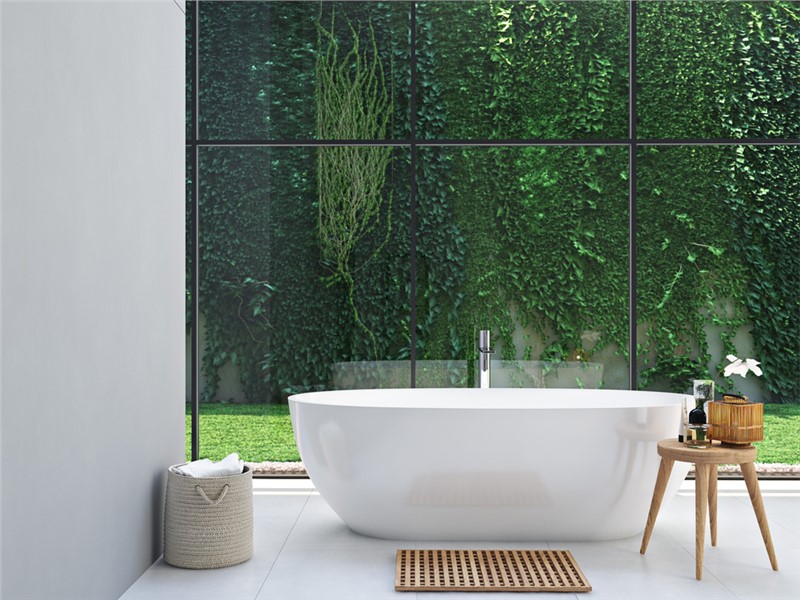
Bathroom Greywater Systems: Revolutionizing Water Use in Homes
In an era where sustainability and environmental conservation are more important than ever, the concept of a bathroom greywater system is catching the attention of many home enthusiasts. These systems are transforming how households manage water usage, making them a vital consideration for anyone looking to implement eco-friendly practices in their home.
Implementing a bathroom greywater system can significantly reduce water waste, creating a more sustainable living environment. Let’s delve into how these systems work and the benefits they bring to our homes.

Understanding Greywater Systems
Before we explore the specifics of a bathroom greywater system, it’s essential to understand what greywater is. Greywater is the relatively clean wastewater from baths, sinks, washing machines, and other kitchen appliances. Unlike blackwater, which comes from toilets, greywater can be reused for other purposes, reducing the overall water consumption of a household.
What is a Bathroom Greywater System?
A bathroom greywater system specifically focuses on recycling water from bathroom sources such as sinks, showers, and baths. By redirecting this water for use in irrigation or toilet flushing, these systems provide a practical solution for reducing water usage in homes.
Benefits of Installing a Bathroom Greywater System
Water Conservation
One of the most significant benefits of a bathroom greywater system is its ability to conserve water. By reusing water that would otherwise go to waste, households can significantly reduce their water footprint. This is particularly beneficial in areas prone to drought or water shortages.
Savings on Water Bills
Reducing water usage not only benefits the environment but also leads to substantial savings on water bills. Homeowners can expect to see a noticeable decrease in their monthly expenses after installing a bathroom greywater system.
Environmental Impact
By reducing the amount of wastewater entering sewage systems, bathroom greywater systems help decrease the burden on local water treatment facilities. This contributes to a healthier environment and more sustainable urban infrastructure.
How to Install a Bathroom Greywater System
Assess Your Plumbing
Before installing a bathroom greywater system, it’s crucial to assess your existing plumbing. This step ensures compatibility and helps identify any necessary modifications. Consulting a professional plumber can provide valuable insights and prevent potential issues.
Choosing the Right System
There are various types of bathroom greywater systems available, ranging from simple manual systems to fully automated ones. Consider factors like budget, household size, and the specific needs of your home when selecting the right system.
Installation Process
The installation process for a bathroom greywater system typically involves diverting greywater from bathroom outlets to a storage tank or directly to an irrigation system. It’s essential to follow local regulations and obtain any necessary permits before proceeding with installation.
Maintenance of Bathroom Greywater Systems
Regular maintenance is crucial for the efficient operation of a bathroom greywater system. This includes cleaning filters, checking for leaks, and ensuring the system is free of blockages. Proper maintenance ensures the longevity and reliability of the system.
Common Issues and Solutions
Like any household system, bathroom greywater systems can encounter issues such as clogs or leaks. Regular inspections and timely repairs can prevent minor problems from escalating into more significant issues.
Legal and Health Considerations
Regulations and Permits
Before installing a bathroom greywater system, it’s essential to understand the legal requirements in your area. Some regions have specific regulations governing greywater reuse, and obtaining the necessary permits is crucial for compliance.
Health and Safety
While greywater is generally safe for reuse, it’s important to follow guidelines to prevent contamination. Avoid using greywater on edible plants and ensure proper filtration to maintain water quality.
Incorporating Greywater Systems into Eco-Friendly Homes
For those committed to sustainable living, integrating a bathroom greywater system is a step towards creating an eco-friendly home. By combining greywater systems with other green technologies, such as water-efficient fixtures and natural humidity control, homeowners can maximize their environmental impact.
Future of Bathroom Greywater Systems
As awareness of environmental issues grows, the demand for sustainable home solutions like bathroom greywater systems is likely to increase. This trend is expected to drive innovation and make these systems more accessible to a broader audience.
Technological Advancements
Ongoing research and development are leading to more efficient and user-friendly greywater systems. Future advancements may include smarter systems with automated controls and improved filtration technologies.
Conclusion
Implementing a bathroom greywater system is a proactive step towards sustainable living. By reducing water consumption, saving on bills, and minimizing environmental impact, these systems offer a practical solution for today’s eco-conscious homeowners. As we move towards a more sustainable future, adopting such technologies will become increasingly important.
For more eco-friendly home improvement ideas, visit this site.

FAQ Section
What is greywater?
Greywater is the relatively clean wastewater from baths, sinks, and other domestic activities, excluding toilet waste.
Can greywater be used for irrigation?
Yes, greywater can be safely used for irrigation, provided it’s properly filtered and not used on edible plants.
Do greywater systems require a lot of maintenance?
Greywater systems require regular maintenance to ensure efficient operation, such as cleaning filters and checking for leaks.
This article contains affiliate links. We may earn a commission at no extra cost to you.